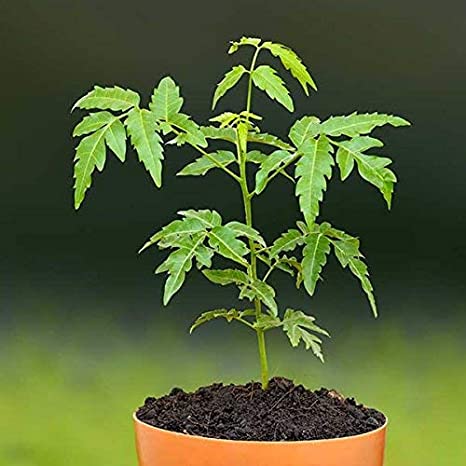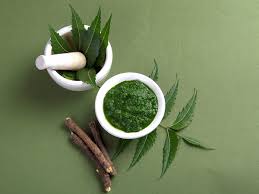Neem plant is used for many purposes. Medicine is made from the bark, leaves, and seeds. The root, flower, and fruit are utilized less commonly.
Leprosy, eye disorders, bloody nose, intestinal worms, stomach distress, lack of appetite, skin ulcers, heart and blood vessel ailments (cardiovascular disease), fever, diabetes, gum disease (gingivitis), and liver problems are all treated with neem leaf. The leaf is also used to induce abortions and for birth control.
Malaria, stomach and intestinal ulcers, skin problems, discomfort, and fever are all treated with the bark.
The flower is used to cure intestinal worms, decrease bile, and regulate phlegm.
Hemorrhoids, intestinal worms, urinary tract diseases, bloody nose, phlegm, eye disorders, diabetes, wounds, and leprosy are all treated with the fruit.
Cough, asthma, hemorrhoids, intestinal worms, poor sperm counts, urinary diseases, and diabetes are all treated with neem twigs. Persons in the tropics chew neem twigs instead of brushing their teeth, but this can lead to disease; neem twigs are frequently infected with fungi within two weeks of harvest and should be avoided.
Leprosy and intestinal worms are remedied with the seed and seed oil. They’re also utilized to prevent pregnancy and trigger abortions.
Tonic and astringent properties are found in the stem, root bark, and fruit.


Unlike conventional insecticides, neem components target the insect’s hormonal system rather than the digestive or neurological systems, preventing future generations from developing resistance. These molecules are part of a group of natural products known as liminoids. Neem contains liminoids, which make it a safe and effective insecticide, pesticide, nematicide, and fungicide. Azadirachtin, salanin, meliantriol, and nimbin are the most important liminoids discovered in neem that have been shown to inhibit insect growth. Azadirachtin is now thought to be neem’s primary insect-control agent. ‘ It appears to have a 90% effect on the majority of pests. It repels and impairs insect growth and reproduction rather than killing them (at least not immediately).
It has been proven over the years to be the most effective growth regulator and feeding deterrent ever tested. Many nuisance insect species, as well as some nematodes, will repel or reduce from feeding. It’s so effective, in fact, that merely a trace of it inhibits some insects from contacting the plants.’
How Neem Plant is used to protect plantation.
Controlling these nematodes is quite challenging. Don’t utilize synthetic nematicides since they have toxicological consequences. These pests are vulnerable to neem products, according to research. ‘Active protection/defence against root-knot nematodes is provided by certain liminoid fractions isolated from neem kernels.’ Nematicidal properties are also seen in water extracts of neem cake. Cardamom farmers in south India are already using neem cake for commercial purposes.
Fungi damage plants and trees in a variety of ways. They wreak havoc on essential crops including wheat, rice, and corn. Neem has been shown to be a fungicide in several studies. If widely adopted, it would have enormous positive benefits on agriculture, the environment, and food supply, with extremely desirable consequences such as poverty reduction, increased output, and on a worldwide scale. Some tests have yielded unexpectedly positive findings. The fungus Aspergillus flavus was not killed by neem-leaf extracts, but they entirely inhibited it from making aflatoxin’. This is significant since aflatoxin is a potent carcinogen that is raising concerns about the world’s food supply.
In Asia, one of the traditional applications of neem has been to control pests in stored goods. Farmers typically combine neem leaves with grain before storing it for months. Weevils, flour beetles, bean-seed beetles, and potato moths are all insects that are repelled by neem leaves, oil, or extracts. Neem oil treatment of jute sacks is ineffective and prevents pests such as weevils and flour bugs from penetrating. Bean-seed beetles (bruchids) are a type of bug that mostly attacks beans, and neem oil kills them in the egg stage.
The pest-resistant properties of a mixture of neem leaves, clay, and cow dung can be employed to construct grain storage containers. In impoverished areas, post-harvest losses are infamously high. Annual losses in storage account for up to 10% of all stored grain globally, i.e. 13 million tons of grain lost owing to insects or 100 million tonnes due to improper storage.
While neem treatments cannot totally replace chemical pesticides used in the preservation of stored foodstuffs, they can minimize the amount of pesticides required, lowering the pesticide load in food grains. Their use could be integrated into stored product management with the right time and novel application methods.
Traditionally, Indian farmers have used de-oiled Neem cake as a fertilizer in their fields. Neem cake is a popular input because of its dual function as a fertilizer and a pest repellant. The leaves of the neem tree have also been used to enhance soil. They’re both commonly utilized to fertilize cash crops in India. Neem cake protects plant roots from nematodes and white ants when ploughed into the soil. Farmers in southern India spread neem leaves in flooded rice fields before transplanting rice seedlings.
Application of neem seed cake to crops gives them a variety of nutrients. In addition, the Neem seed cake reduces the quantity of soil insect pests, fungi, bacteria, and nematodes, as well as protecting the crop from their damage. When mixed with soil, neem seed cake can also lower alkalinity by creating organic acids.
Sources: https://www.rxlist.com/neem/supplements.htm
https://agritech.tnau.ac.in/org_farm/orgfarm_green_manure_neem.html
Access Date: 4 May 2022






